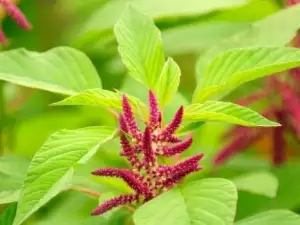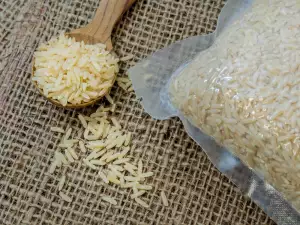Amaranth was familiar to the Aztecs. However, they did not use the grain for food. They attributed numerous magical properties to the plant. Spanish invaders feared the deified plant, tinted in the colors of the rainbow, and tried to eradicate it.
For many long years, cultivating it was prohibited, with the main goal of putting an end to the human sacrificial ceremonies, in which the plant played a key role. Legends state for example, that the mixture of ground Amaranth seeds, combined with bee honey or human blood, was offered to their revered idols.
Despite this, the plant was not lost, even though it was forgotten for several centuries. Amaranth continued to be cultivated in just a few distant areas in Mexico, as well as in the Andes. Today, this bio-culture is part of another important ritual - that of healthy eating.
Besides being healthy, amaranth has its own aura. Today, it is used all over the world and there are thousands of recipes for its preparation. For example, in Mexico, where the plant is still cultivated, they make popcorn with sugar syrup from it.
The result is called alegria - happiness. In India they use the small grains to make a delicious type of pastry, and in Nepal - chapati. For healing purposes, in Ecuador they make a drink from the grains, which is used to regulate the menstrual cycle.

Amaranth is an annual plant. In the past it was thought to be eternal, which is where its name comes from - in translation, never fading flower. It grows up to 6.5 ft (2 m) in height and is the most beautiful grain crop.
Its leaves are dyed white, green, pink, orange, to purple and dark red. Its seeds (that valuable treasure) are hidden in the pods, which are similar in appearance to curly corn silk. They're the size of lentils, creamy or golden colored.
Aside from being healthy, amaranth is also easy to cultivate. Even if it haphazardly falls onto soil, all it needs is a little water to thrive. In the past, as well as today, there are over 60 known species of amaranth.
Amaranth has countless health benefits, for which it simply must be included in a person's menu. It is among the foods that do not contain gluten - very few grains can boast a similar claim.
It contains high amounts of protein, lysine, fiber, calcium, iron, essential amino acids and magnesium. These small seeds are easily absorbed by the body and digestive tract because the substances found within them are easily soluble. When it comes to polyunsaturated fatty acids and vitamin E content, they are akin to olive oil.
It is among the best products for vegetarians. When combined with wheat, corn or brown rice, amaranth provides a full spectrum of proteins, to act as an alternative to foods such as fish, chicken or red meat. As well, the plant has been proven to lower bad cholesterol.




















Comments